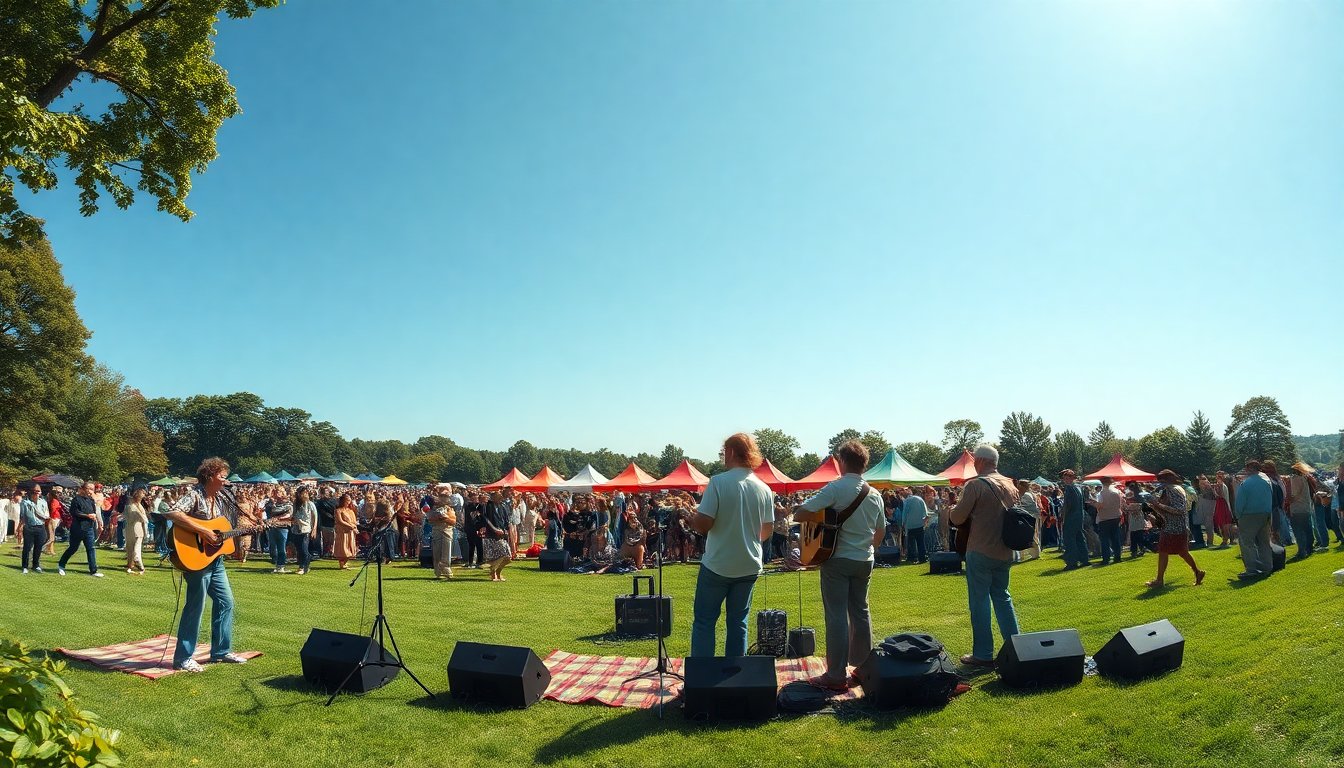Table of Contents
The documentary Newport & the Great Folk Dream, directed by Robert Gordon, explores the significant history of the Newport Folk Festival from 1963 to 1966. This film utilizes over 100 hours of previously unseen footage, presenting performances that evoke a strong sense of nostalgia and cultural importance. In contrast to Murray Lerner’s 1967 film Festival, which offered a disjointed perspective on the era, Gordon’s work creates a unified narrative that fully engages viewers in the key moments of this transformative period in music history.
Unveiling the magic of Newport
The documentary opens with striking images of a young Johnny Cash. It quickly establishes a connection to the iconic year of 1965, a time when Bob Dylan electrified the folk music scene. This event is widely regarded as a watershed moment, influencing not just folk music but the entire landscape of American music. The film meticulously situates this pivotal performance within a broader context, highlighting the diverse musical influences present at Newport.
The evolution of folk music
The film illustrates that changes in folk music began well before Bob Dylan’s iconic electric performance. The 1964 festival introduced new influences, notably the cultural phenomenon of Beatlemania, which significantly impacted the direction of folk music. Electric instruments started to emerge on stage, and artists such as Howlin’ Wolf began incorporating blues into the festival’s lineup. This evolution of sound reflected the shifting dynamics of the audience, which became increasingly vibrant and less constrained as the festival advanced.
By the 1965 festival, the atmosphere had undergone a notable transformation. The event evolved from a genteel gathering into a spirited celebration of music and freedom. Attendees expressed their joy in unconventional ways, such as dancing barefoot and reveling in the raw energy of performances. The collaboration of Mimi and Richard Fariña emerged prominently, with their song House Unamerican Blues Activity Dream exemplifying a new and invigorating style that resonated with the audience. This marked a significant departure from traditional folk sound, indicating a shift in the representation of folk music.
The folk dream and its ideals
At the core of the Newport Folk Festival lies a vision of community and activism, significantly shaped by the ideals of Pete Seeger. His dedication to promoting equality and social justice through music culminated in a groundbreaking decision during the 1963 festival: he paid all performers equally. This radical initiative reinforced a sense of unity among artists and attendees alike. Seeger’s vision embodies the essence of the folk dream, fostering a collective spirit that unites diverse voices under a common banner of hope and resilience.
Musical moments of significance
The performances at the 1963 festival highlighted a spirit of idealism. The opening act featured Clarence Ashley and Doc Watson, whose rendition of The Coo Coo Bird resonated with authenticity. Other notable highlights included the Moving Star Hall Singers’ moving performance of Michael Row the Boat Ashore, which conveyed a profound, timeless quality. This festival not only celebrated music but also served as a precursor to the March on Washington, connecting the power of song with the urgent demands for civil rights, marking a pivotal moment in American history.
The evolution of the 1964 festival
The 1964 festival capitalized on its previous success by presenting a diverse array of artists and genres that pushed the boundaries of traditional folk music. Notable performers like Judy Collins and Joan Baez continued to embody the spirit of activism through their music. Additionally, the festival embraced more experimental acts, showcasing the increasing diversity in musical expression. The inclusion of the Blue Ridge Mountain Dancers and the dynamic performance by Buffy Sainte-Marie expanded the audience’s appreciation for various cultural influences.
The impact of Bob Dylan
Bob Dylan’s performance at the Newport Folk Festival in 1965 marked a pivotal moment in music history. The festival was evolving, becoming a platform for significant change. Dylan’s electric set was not just a solo act; it represented the culmination of a transformative period in music. With artists like the Paul Butterfield Blues Band already slated to perform, the festival was ready for a new direction. Dylan’s rendition of Maggie’s Farm was a daring declaration, signaling a departure from the acoustic roots that had long characterized folk music.
Mixed reactions at Newport folk festival
The audience’s reaction to Bob Dylan’s performance at the Newport Folk Festival was mixed. Some attendees booed, reflecting the tension between traditional expectations and the evolving nature of music. However, the film Newport & the Great Folk Dream emphasizes that Dylan’s influence extended beyond that night. It reshaped the understanding of folk music and its potential.
As the 1960s progressed, the essence of folk music, which is rooted in community and shared experiences, began to evolve into something more individualistic. This shift marked a significant transformation within the genre.
Ultimately, Newport & the Great Folk Dream serves as a tribute to the folk movement while recognizing the complexities that defined it. Dylan’s electric performance marked a significant turning point, highlighting the ongoing tension between tradition and innovation. The festival remains a crucial chapter in the story of American music, capturing a fleeting moment when music, culture, and activism intertwined in powerful ways.


